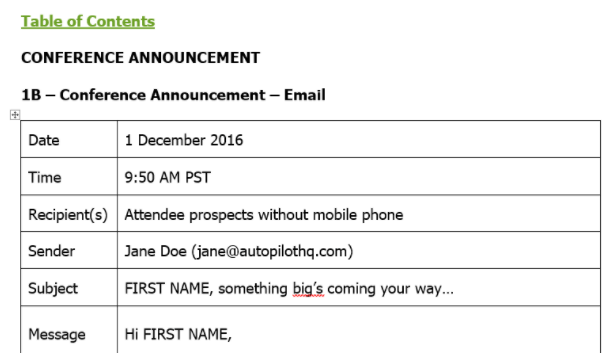
In this digital age, keeping the customers engaged with your brand is one of the most important parts of every business. Personalization has become so important that the companies that have been implementing it have been successful in the age of UX. It has now become a requirement.
Personalization refers to the process of using the information provided by the user to provide a personalized experience to them according to their needs and preferences. This helps you in making your customers feel heard and market the right product to the right person at the right time.
Why do we need to personalize?
Let’s not confuse personalization with customization. Personalization provides experience based on the information provided by the user whereas customization gives the users liberty to custom-make a product or service.

When you go to a website, say for shopping or maybe just surfing and you realize that the app or the website is interacting with you. This makes you like the brand and go back to them every time you have a similar requirement. This will make you feel special and more connected to the brand.
Personalization is important because it creates a bond between the users and the brand and makes them loyal customers. If there is no personalized experience given to the users then the user might feel like he’s not being given much help from the brand even though it is.
While personalization can be a big hit for your brand, context factors also make a lot of difference. The device the customer is using, whether in the location the person is in or even the time of the day matters a lot in personalization.
Importance of personalized design
Personalization and design go hand in hand. If the UX of your brand is great and personalized for different kinds of users, you are good to go!
Let’s look at some of the best practices for Personalized UX Design
Show relevant recommendations
When providing personalized information, it is important to make sure that the information that you show the users is relevant and does not disturb the flow of the user experience. Many shopping applications show recommendations according to the search made by the users. This saves the user time and helps the user purchase more valuable.
Myntra shows trending products to let the users know what is trending currently. This is a different way of recommending products.

Understand the interests
When we talk about personalized experiences, Netflix is a well-known player in the market. Netflix provides a personalized experience to its customers by asking for customers’ preferences once they sign up. The first thing that you will observe on the home page is that the content is adjusted according to your interests.

Dynamic personalization
This practice uses algorithms to create an image of their potential customers, their buying habits, and their needs, depending upon factors like demographics, behavior, geolocation, and device.
Combining design with emotion
Combining design with emotion creates a magical personalized experience. To create trust between a brand and its customers, it is important to get the required information from the user and use it to create a design that develops a positive emotional reaction from the user.
It should be taken into consideration that the design should not invade the privacy of the users. This is a major turn off and is not liked by the customers.
Navigation in personalisation
Navigational personalization means showing products that have been searched by the user but left without purchasing. You can show the products and similar products on the home page or somewhere it is visible to the user when they visit your page next time.
I searched for watches on Amazon and left without purchasing. Now when I visited Amazon again, it shows different kinds of watches under ‘items from popular brands’.

Technical design in personalization
Technical design is another practice that guides your technology decision towards a valuable personalized experience. There are two things that you need to consider: The kind of data that you collect from the users and the tactics that need to be implemented to this data.
Here’s a quick mapping of tactics with respect to customer volume and session time:

To implement such a technical design, different customer data platforms and digital experience platforms can be used. Customer data platforms have become a popular technology that unveils the value of market segmentation and personalisation at scale. Digital experience platforms (DXP) are designed to engage users by building websites rapidly. If you are working on an advanced DXP you will have extended possibilities like machine learning and behavioural profiling that will help you become aware of different segments.
The four magical steps
Segmentation is a great way to organize contacts by their traits, personas, behavior, or other defining details. This helps the brand to create hyper-personalization content for each user. Segmentation makes personalization more manageable by grouping contacts.

Once you are done creating a segment worksheet, the next step is creating a campaign worksheet that includes the strategy that you will use for personalization. Talk about what the goals of your campaign would be, the description of the customers, the time frame of the campaign, the budget, etc.
The next step is wireframing personalization which is the first step in the design process. In this step, you decide the design that you will give to your campaign. Creating a simple wireframe makes sure that your designs will take into account the different page elements that are required to go into the design, and also that they’re placed in the best possible way.
The last and final thing to do now is to create a copy deck. A copy deck is a document that holds a series of related messages. It basically provides the infrastructure to plan your copy.
Writing a copy that relates to your campaign and design is the most important step. For example:

Conclusion
Personalization is actually personal. It is the key for your brand to achieve new heights. It helps you gain the trust of the users and enhances the user experience by providing relevant content, and functions that match the user’s requirements. Personalization can be a great benefit if done in the right way. All you need to do is implement a successful personalization strategy with the help of the practices mentioned above! Contact us at [email protected] for your online business to boom!
Subscribe
Related Blogs
UX Best Practices for Website Integrations

Website Integrations determine whether users stay engaged or abandon a site. I experienced this firsthand with a delivery…
How design thinking acts as a problem solving strategy?

The concept of design thinking is gaining popularity these days since people across different industries are using it as a…
10 major challenges that come across during an agile transformation

It’s no longer a mystery that agile was created as a response to the various concerns that the traditional waterfall…




